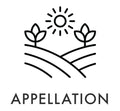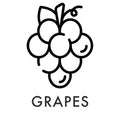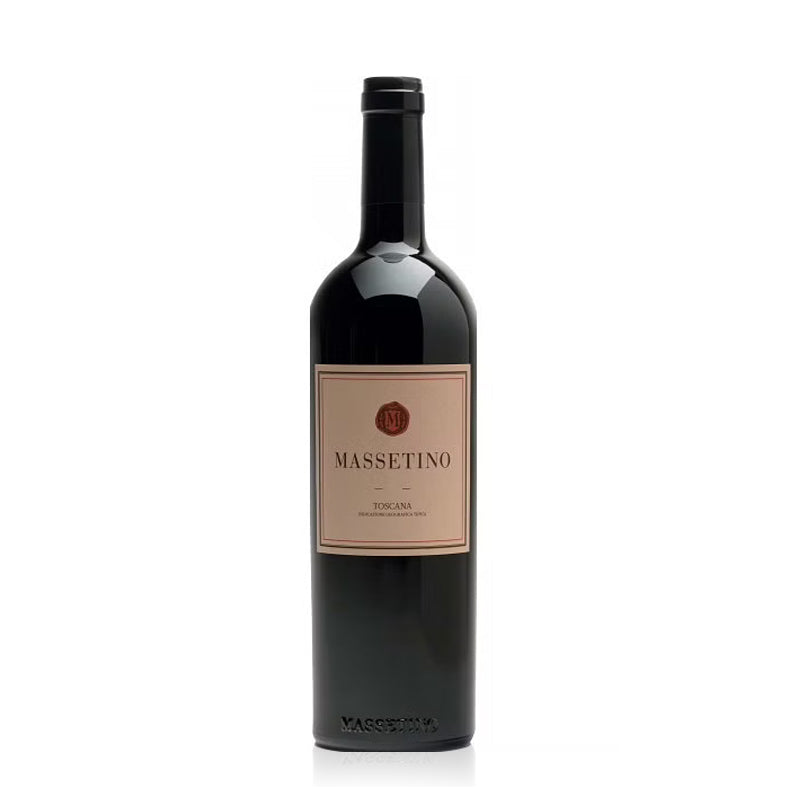Massetino 2021 750ml










Massetino 2021 captures the essence of Masseto’s distinctive style with remarkable depth, balance, and refinement. Crafted primarily from Merlot with a touch of Cabernet Franc, this vintage reveals layers of ripe black fruit, violets, and fine spice, framed by velvety tannins and a long, vibrant finish. Poised and powerful yet beautifully polished, it reflects the precision and artistry of Tuscany’s most prestigious terroir—an exceptional second wine that stands proudly on its own.
The Wine Advocate | RP 96
Published: May 31, 2023
Drink: 2025-2045
The Masseto 2021 Massetino is mostly Merlot with a touch of Cabernet Franc for good measure. The wine (packaged in a heavy glass bottle) is very richly concentrated and layered. You see (and taste) the opulent texture of the wine as it slowly coats the glass. Quality fruit is matched by carefully selected oak, and the intensity of both builds on the palate. This vintage is poised for especially long cellar aging. This vintage of Massetino (2021) scores neck-in-neck with the current vintage (2020) of Masseto.
Following a very productive 17 years at Masseto and Ornellaia, Estate Director Axel Heinz announced in March of this year that he was leaving his position. He will join Château Lascombes in Bordeaux as CEO. Axel was born in Germany, raised in France and established a brilliant winemaking career in Italy. "It makes it difficult to know which national soccer team to root for," he once joked with me. Under his time at Masseto and Ornellaia, the two brands grew in respective strength with individual identities. His new releases command some of the highest prices in Italian wine and are sought after by collectors worldwide. Axel oversaw the construction of the new Masseto winery, and he launched a second wine called Massetino (new vintages of both are reviewed here). Axel was quoted in the Italian press as saying, "Italy will stay in my heart forever, but it's time to go back to France."
Jamessuckling.com | JS 96
Published: Jul 25, 2023
Sweet berries with violet and rose aromas. Raspberries. So perfumed. Medium-bodied with very fine velvety tannins that run the length of the wine. Vibrant at the end. Second wine of Masseto. Best ever. Drink in 2027 but already a joy to taste.
Decanter | D 93
Published: Aug 1, 2023
Drink: 2025-2036
Dried herbs and dried flowers on the nose with quite dominant oaky scents. Ripe black fruit and abundant tannins, not so rich or fleshy but massy in the mouth, wide, giving a large structure which supports the expression. This is smooth and bright with grip and intensity but you can really feel the alcohol here and it detracts from any kind of delicate nuance with toasted spices, coffee, dark chocolate and cedar at the fore. Heady and overt, powerful, though sleek and layered, the tannins are great and the fruit feels both cool and ripe but there's an underlying sense of heat from start to finish. Malolactic fermentation in French barriques (50% new) then 12 months ageing after which the 90% Merlot and 10% Cabernet Franc was blended and returned to barriques for three months before bottling. Winemaker Gaia Cinnirella.
Closure: Cork
Alcohol: 15.50%
Body: Full
Grapes: 10% Cabernet Franc 90% Merlot
Masseto.com
The inaugural vintage of Massetino was 2017, released in 2019, precisely 30 years after the first vintage of Masseto. The birth of the second wine and the opening of Masseto winery during the same year, were both seminal moments in Masseto history. Just like its elder sibling it juxtaposes power and opulence with discretion and classicism.
- 2021 -
2021 began with a rainy and mild winter that replenished the soil's water reserves.
After a dry March, budding took place in the first two weeks of April. The gradual rise in temperatures, with normal rainfall, allowed the shoots to grow steadily, leading to blossoming in excellent conditions at the end of May. Perfect summer weather set in from June onwards, with slightly higher than average temperatures and almost no rainfall, leading to veraison in the last week of July. The dry weather lasted throughout August and September.
In spite of this, the spring rains gave the calcareous-clayey soils the ability to release sufficient reserves to the plant to avoid debilitating stress, resulting in concentrated grapes with high quality potential.

